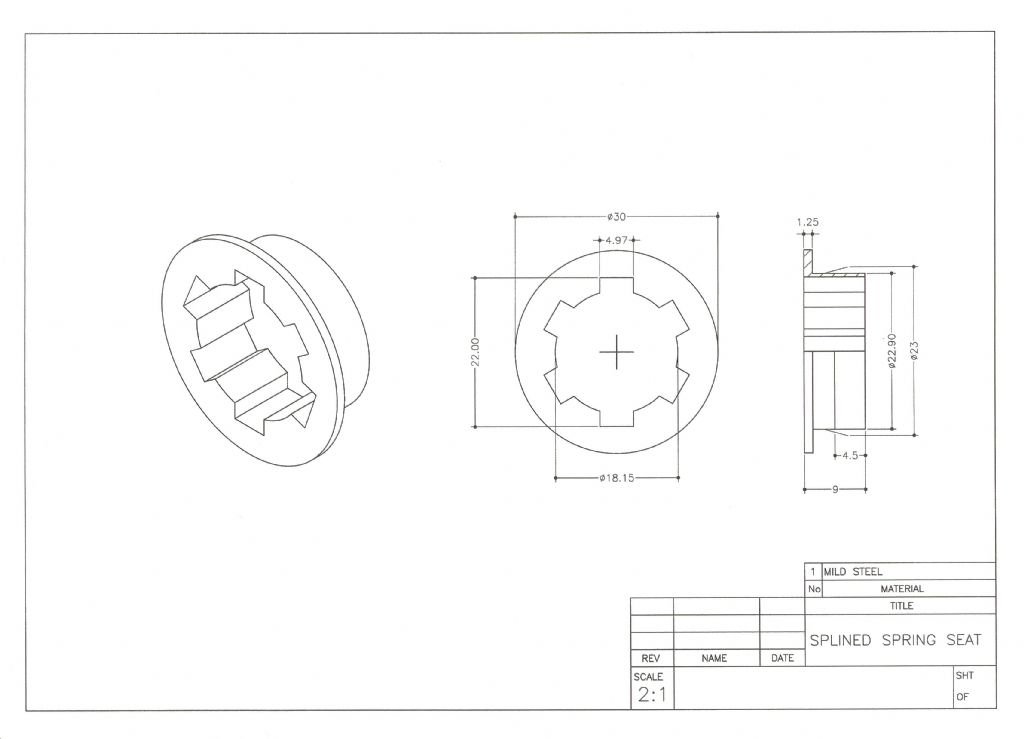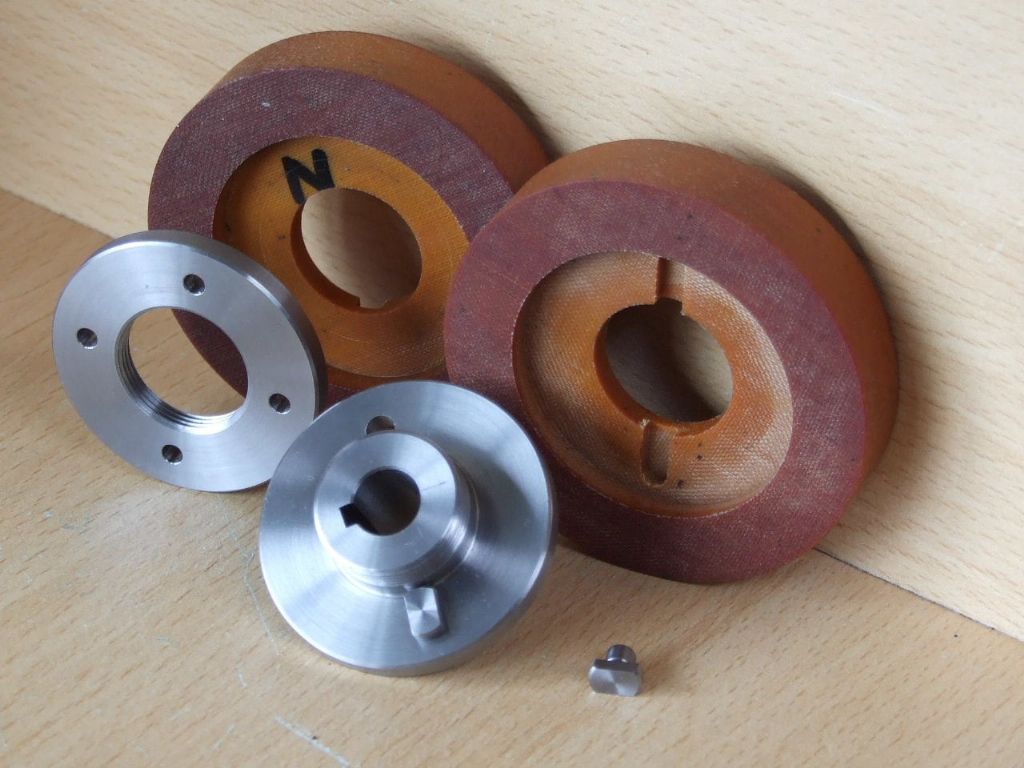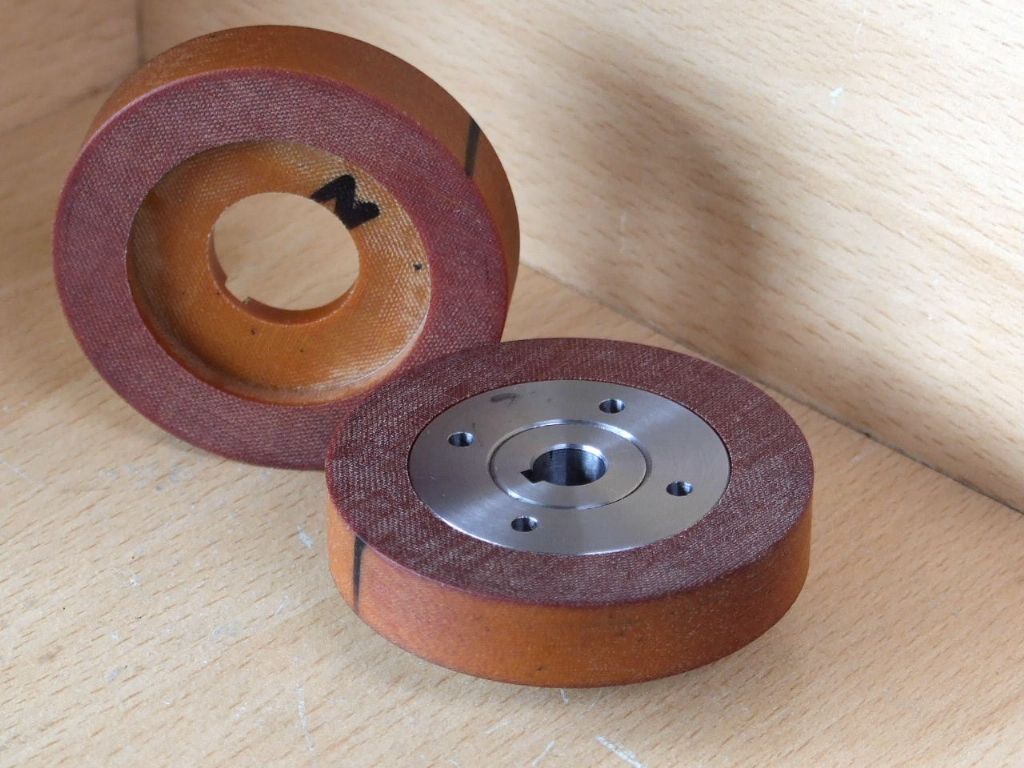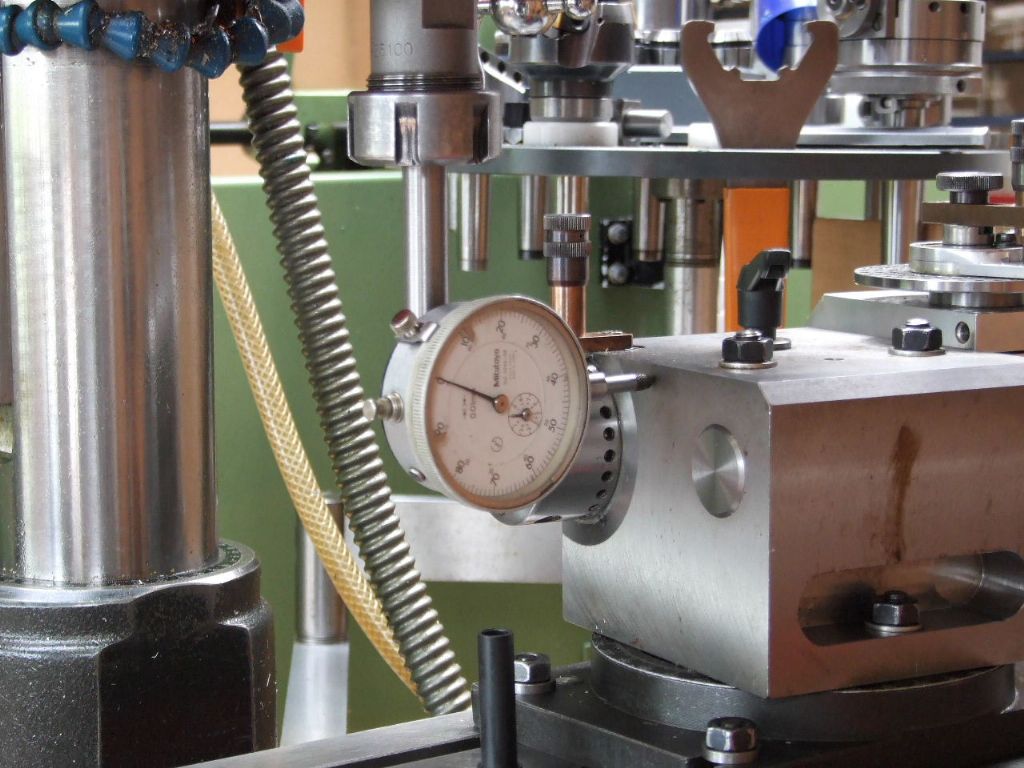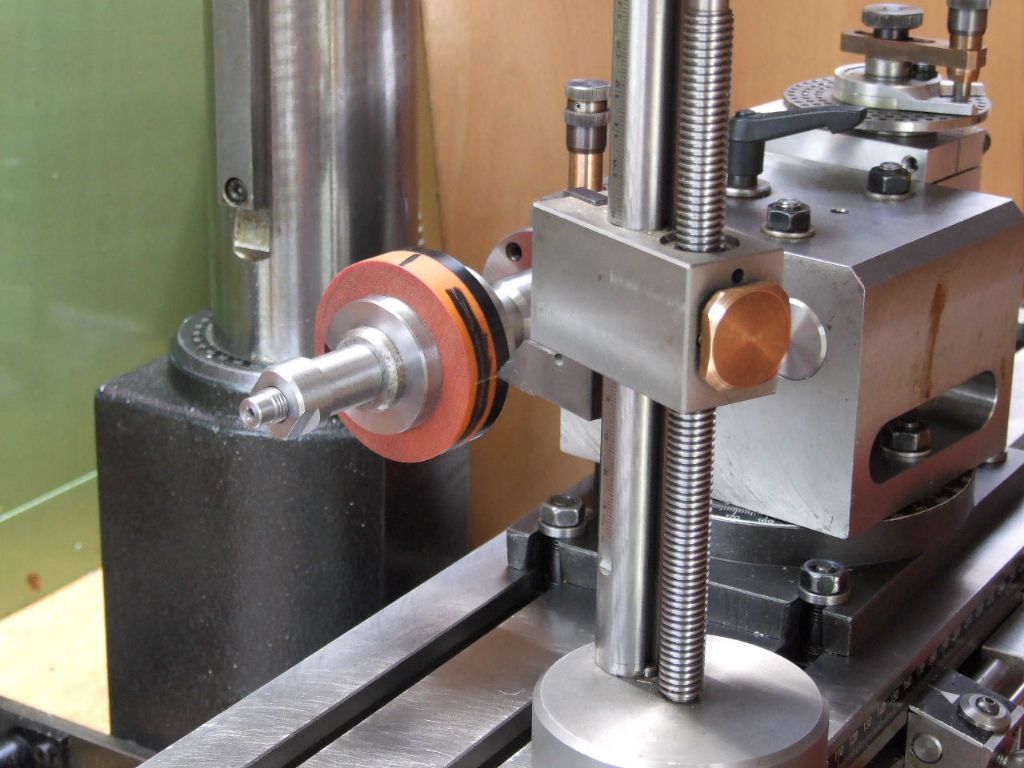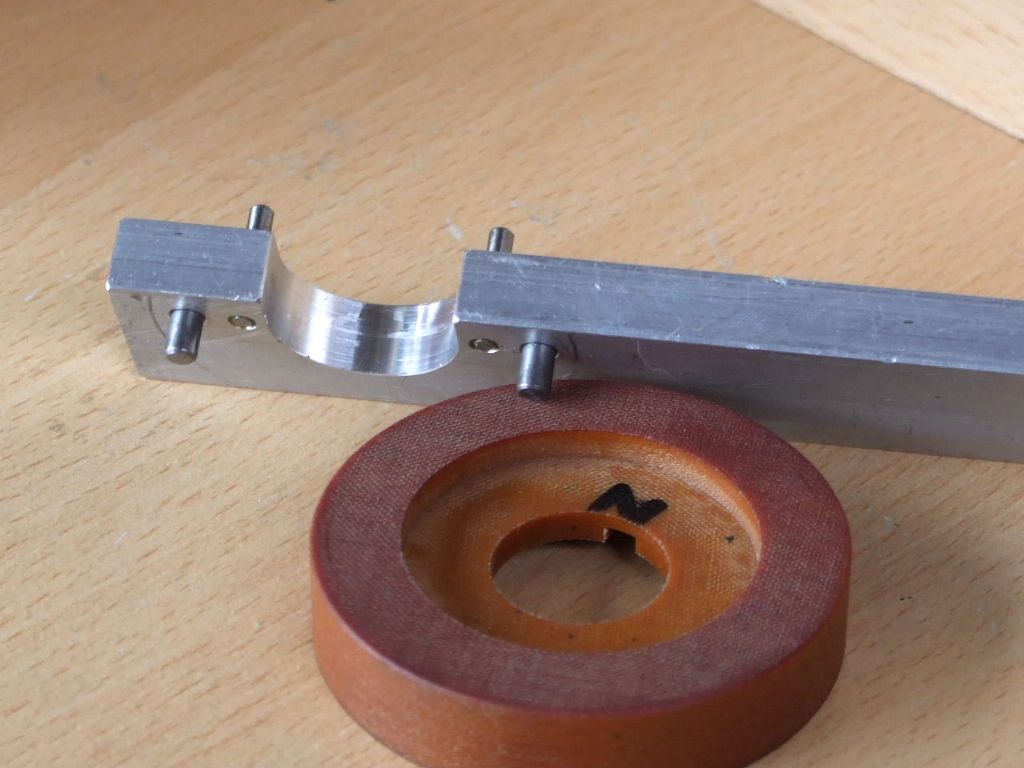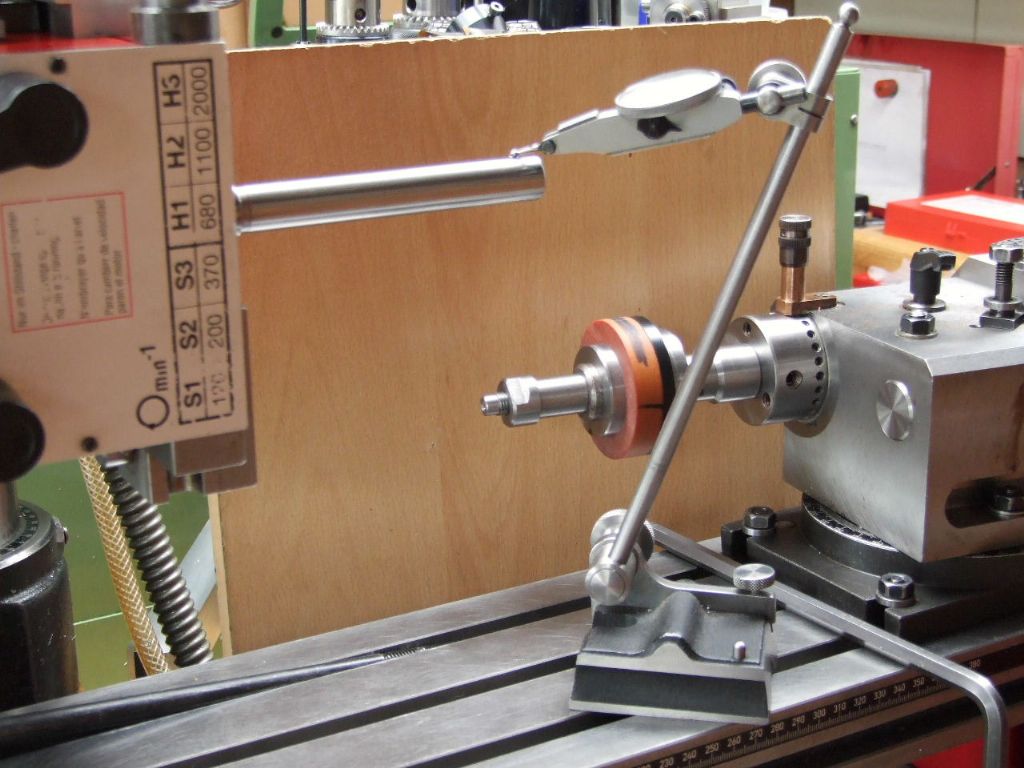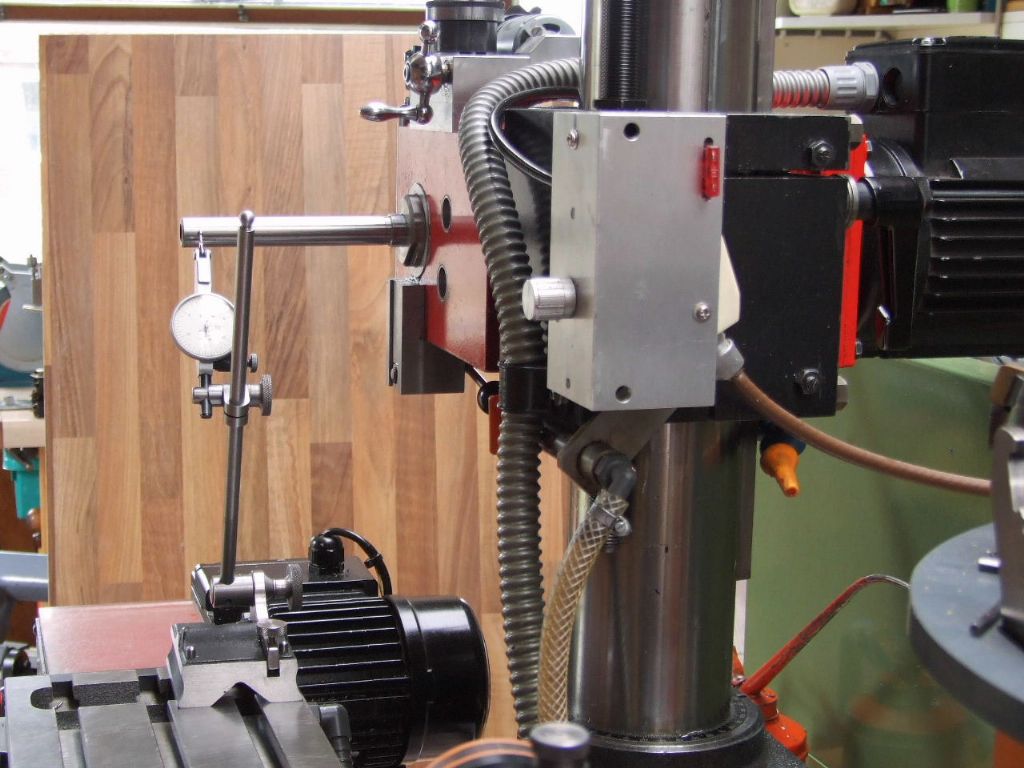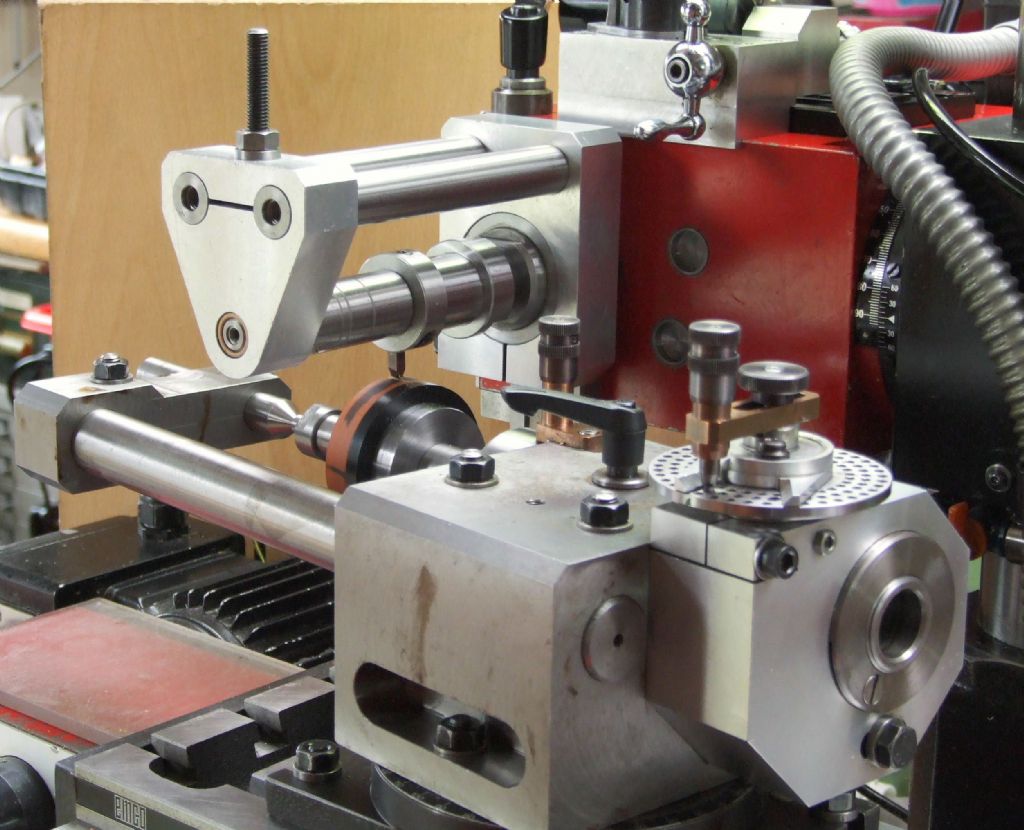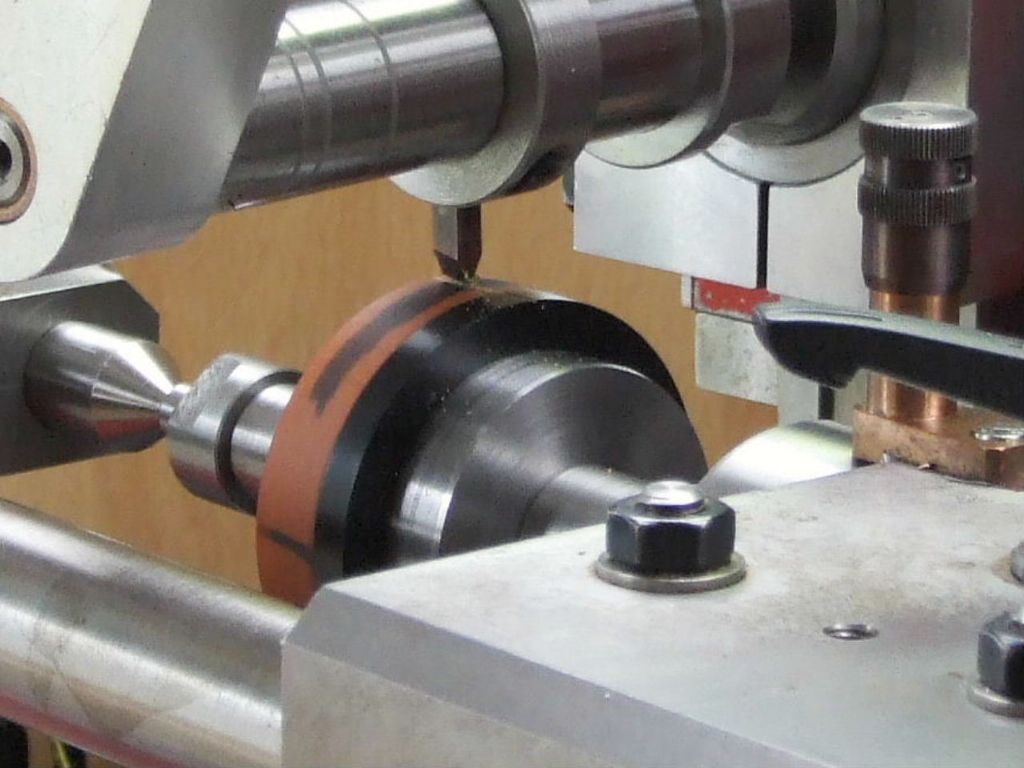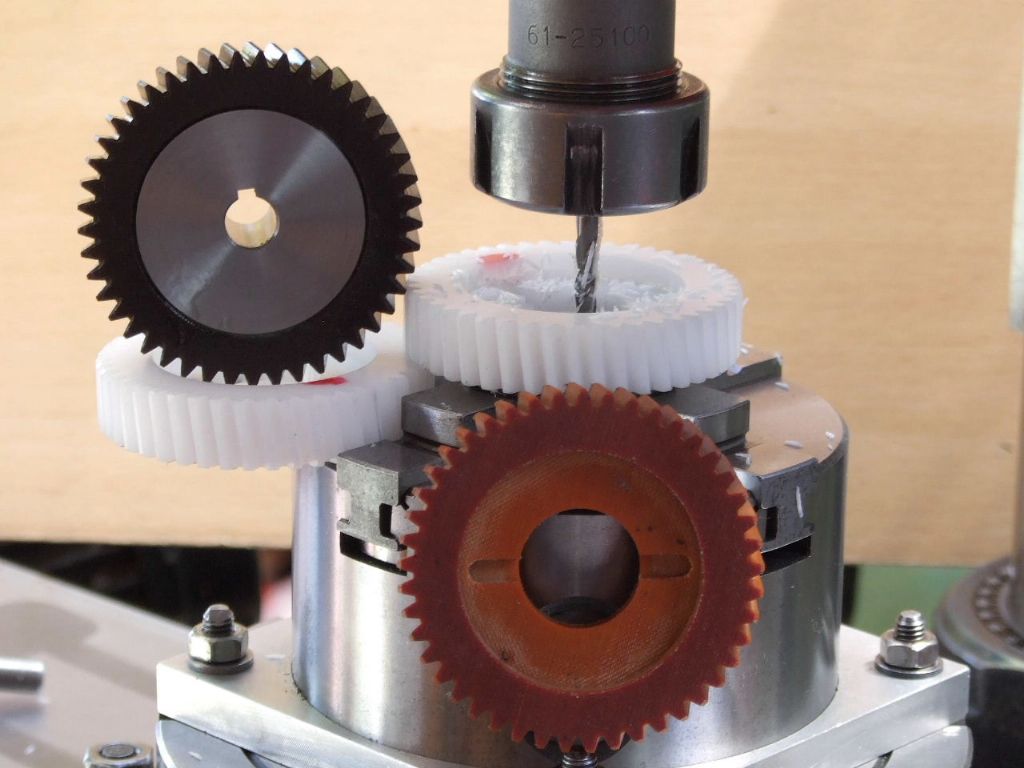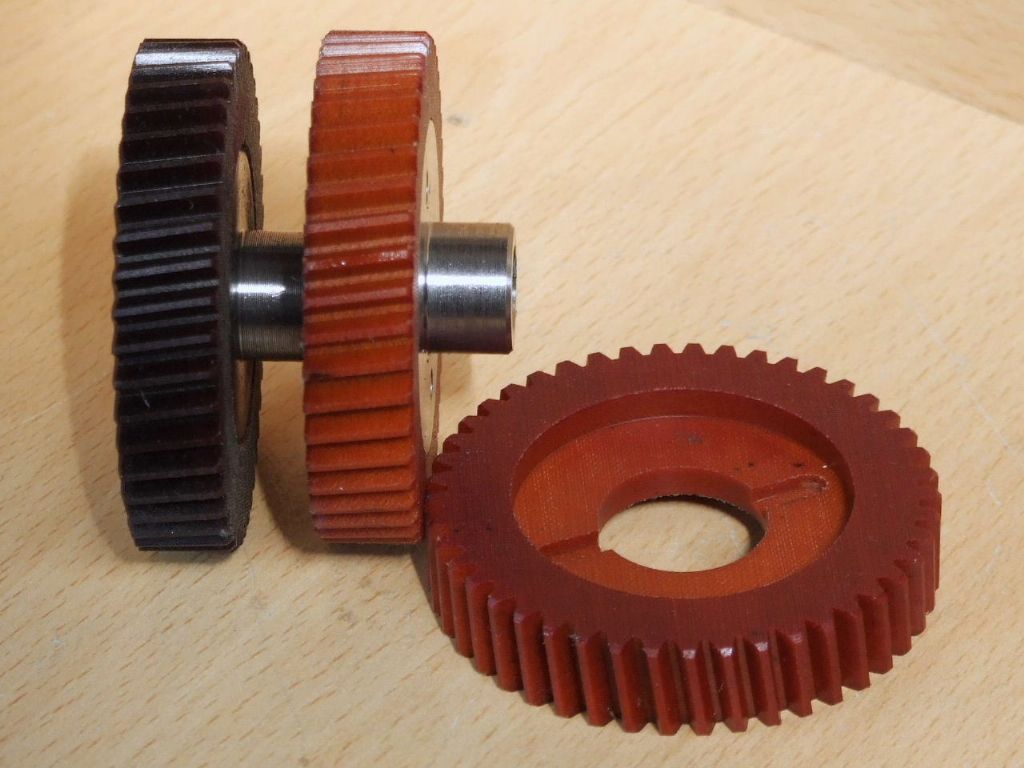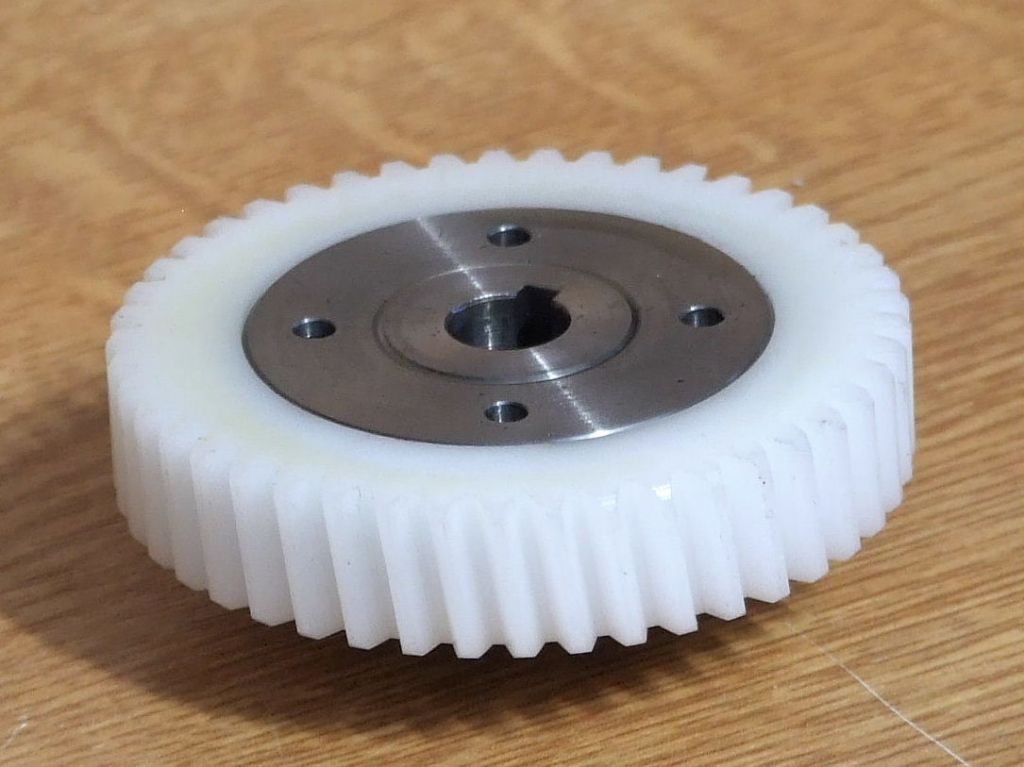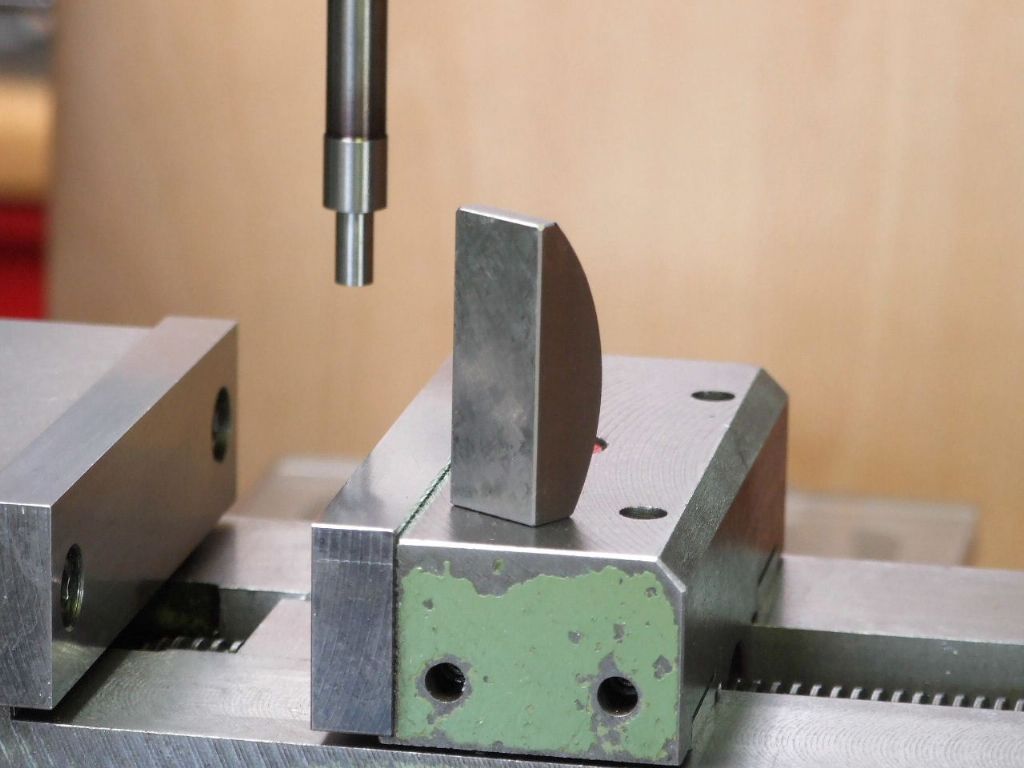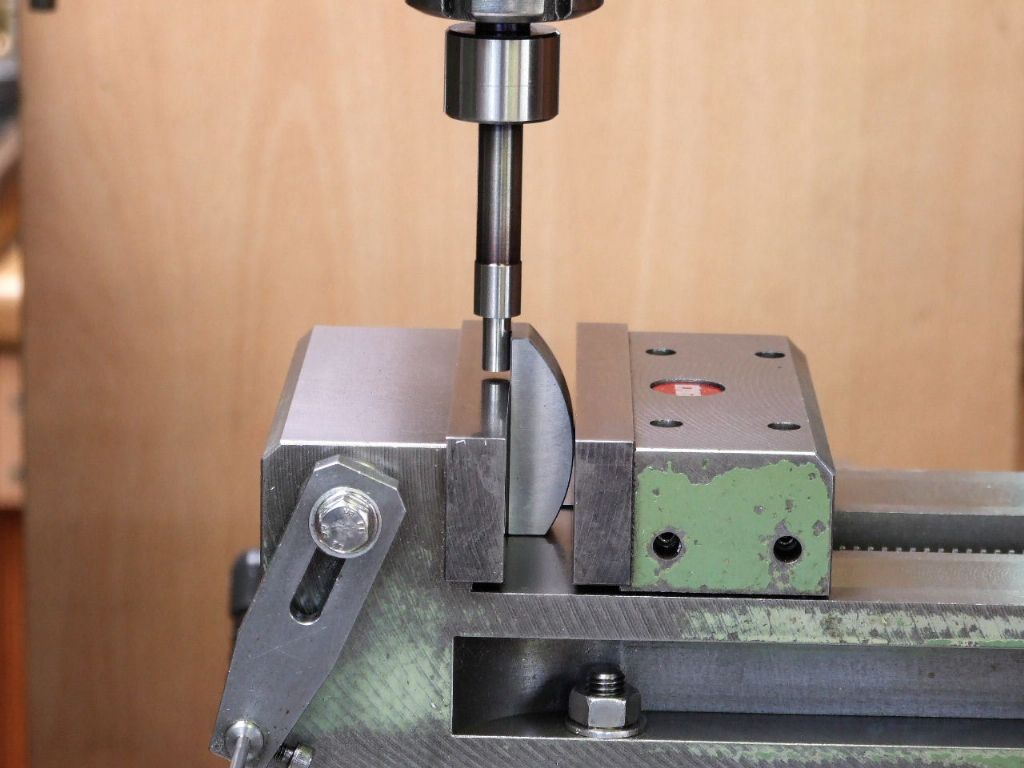
It has been a while since I posted details about the FB2 Tufnol Gear 47. John Slater has kindly produced a 3D view of the proposed design which I am currently working on.


Emco press their Tufnol gear onto the arbor over a coarse knurled diameter. The gear is retained with what I presume to be Epoxy glue from what I can see. I would expect the gear teeth are then machined after the parts are assembled.
Trying to make the gear separate and pressing this onto a knurled arbor did nothing to inspire my confidence in maintaining any form of concentricity.
To this end it was decided after quite some debate between John and myself to drive the gear with two face keys and retain the parts together with a Ring Nut. This type of construction lends itself to the use of other materials for the gear, such as Delrin. Which might present problems if the assembly was just glued together. Without that is resorting to some form of exotic glue. The Ring Nut will be locked on assembly by drilling an tapping M3 through one of the Peg spanner holes, (one that is not over the drive keys, hence the need for 4 spanner holes) and inserting an M3 Allen grub screw.

The Dividing head has been rotated through 8 degrees and the DTI is being used to check the angle over 30 mm of cross-slide travel.

The Mandrel to mount the gears is next checked for concentricity and adjusted using the GHT, Versatile Dividing Head method.

Once the gear is assembled with its black Delrin backing piece, (to stop the Tufnol delaminating during cutting of the Gear) two lines are scribed 0.2 mm above and below the centreline. Similar lines are already marked on the width of the gear blank. After which the gear blank is rotated trough 90 degrees to get the marks at TDC.
These will be used to centralise the cutter over the blank. The cutter needs to make contact in the 0.4 mm square. Once that is, the FB2 has been configured for Horizontal work which will have to wait until tomorrow.
Below is the double side Peg Spanner to fit the Gear and the FB2 Quill Assembly,

Regards
Gray,
 Ian P.
Ian P.

